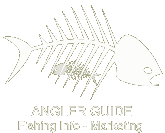 |  |
|
Navigation - Business - Great Lakes - Great Plains - Northeast - Northwest - Rocky Mountains - Southeast - Southwest - Technology - Trophy Catches
|
In 2011, the hatchery produced 2 million early-hatched bass, which were stocked primarily in Hillsdale and Cedar Bluff reservoirs, with a few stocked in smaller impoundments on a trial basis. The goal for 2012 is 2.5 million fry. Of those stocked this year in Hillsdale and Cedar Bluff, approximately 100,000 in each lake will be marked finglerings, so biologists can separate early-propagated bass from wild-spawned bass during testing later in the year. In addition, Herington City Lake, an impoundment with virtually no historical natural bass recruitment, will receive 600,000 seven-day-old fry. Typically, hatchery and wild bass spawn in mid-June, too late to eat young gizzard shad — a primary prey species for bass, which hatch earlier and are too big for young-of-the-year bass to feed on. This results in slower growth rates and smaller year-class bass that are more vulnerable to winter die-off after the growing season ends in fall. "We want to emphasize that while we are hopeful for the long-term success of this project, it is still experimental," says KDWPT Fisheries Section chief Doug Nygren. "We will monitor progress for the next few years, and if it's producing significant numbers of additional largemouth bass for anglers, we'll expand the program. If not, it will be discontinued." The concept of hatching bass earlier in the year is relatively simple. KDWPT fisheries biologists have built a climate-controlled building — called the Bass Propagation Facility — for the process. Here, they can manipulate water temperature and photoperiod (length of light in a day) in hopes that mature breeding bass will spawn approximately six weeks earlier than normal. If the parent bass respond as expected, their fry will be reared in raceways to fingerling size by the time wild-hatched bass are still in the fry stage. Both fry and young fingerlings are stocked in lakes, where they feed on zooplankton until young shad are available. Kansas boasts 24 large reservoirs, but few of them provide consistent largemouth bass fishing opportunities. Fishery managers have struggled for years to maintain bass populations in reservoirs, but in most cases, it’s been a futile battle. Kansas anglers catch plenty of largemouth bass, but most come from the tens-of-thousands of farm ponds and small lakes that dot the state. When the reservoirs are new, wooded draws, weedy farm fields, and grasslands are flooded, providing excellent largemouth habitat. During this time, largemouth bass flourish and grow quickly, but after five or six years, populations decline. In the past, biologists have tried stocking more largemouth bass, but this did not result in increased numbers of large bass. Biologist have determined that lack of aquatic vegetation (plentiful in small lakes and farm ponds) in large reservoirs is the missing ingredient. Aquatic vegetation is important for newly-spawned largemouth to hide from predators and feed. Vegetation harbors insect larvae, minnows, and panfish species that are important food sources for largemouth bass. Biologists have transplanted vegetation and even fenced off coves in attempts to reestablish vegetation, but results have been limited. During the first attempt, the biologists learned important lessons. For the second attempt, breeding bass were removed from outdoor hatchery ponds and brought to indoor tanks in November 2009. Water temperature and lighting was adjusted to mimic winter — 40-degree water and 10 hours of light followed by 14 hours of dark. On March 11, 2010, the lighting was changed to 14 hours of light and 10 hours of dark to replicate the diurnal cycle of May. The water was warmed to 68-70 degrees. On March 25, it was warmed to between 70-72 degrees. Until this point, the male and female bass had been kept in separate raceways. On March 25, the sexes were put into the same raceways but kept separated by a screen. Bass could then react to the pheromones given off, allowing gonads to develop. On April 2, the screens were pulled and the sexes were allowed to mingle. Spawning mats (artificial nests) were placed on April 9, and on April 14, the first spawns were collected. The result was that the Meade Hatchery produced nearly 750,000 fry in 2010. The process is constantly being refined. Water quality is monitored carefully in spring. Staff watch levels of ammonia and un-ionized ammonia carefully, and whenever set parameters are exceeded, they make adjustments. The water heating system is now improved so that the temperature doesn’t fall during the night. Correspondence with the Florida Bass Conservation Center in Florida and biologists in Texas also helped Vajnar and Jagels make the program a success. The success of this project depends on the survival rate of stocked bass through their first year. If it works as hoped, Kansas anglers should be catching bigger and more of their favorite sportfish in the future.
Comments
«Back | News Home
| |||||||||||||||||||||||||||||||||||